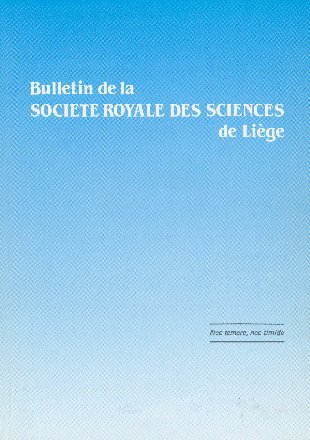- Startpagina tijdschrift
- Volume 74 - Année 2005
- Numéros 1-2- 3
- NIR interferometry of the Seyfert galaxy NGC 1068: present interferometric results and future goals
Weergave(s): 379 (2 ULiège)
Download(s): 143 (3 ULiège)
NIR interferometry of the Seyfert galaxy NGC 1068: present interferometric results and future goals
Technology roadmap for future interferometric facilities, Proceedings of the European Interferometry Initiative Workshop organized in the context of the 2005 Join European and National Astronomy Meeting "Distant Worlds", 6 - 8 July 2005, Liège University, Institute of Astrophysics, Edited by J. Surdej, D. Caro, and A. Detal

Abstract
We discuss present results and future goals of near-infrared interferometry of NGC 1068. We show that infrared interferometry is able to resolve the innermost, sub-parsec-scale dust environment surrounding the accretion disk. A diffraction-limited K’-band image of NGC 1068 with 74 mas resolution and the first H-band image with 57 mas resolution were reconstructed from speckle interferograms obtained with the SAO 6m telescope. The resolved structure consists of a compact core and an extended northern and south-eastern component. The compact core has a north-western, tail-shaped extension as well as a fainter, south-eastern extension. The K’-band FWHM diameter of this compact core is approximately 18×39 mas or 1.3×2.8 pc, and the position angle (PA) of the north-western extension is -16. The extended northern component (PA ~ 0◦) has an elongated structure with a length of about 400 mas or 29 pc. The PA of –16◦ of the compact 18×39 mas core is very similar to that of the western wall (PA ~ –15◦) of the ionization cone. This suggests that the H- and K’-band emission from the compact core is both thermal emission and scattered light from dust near the western wall of a low-density, conical outflow cavity or from the innermost region of a parsec-scale dusty torus that is heated by the central source (the dust sublimation radius of NGC 1068 is approximately 0.1 – 1 pc). The first near-infrared K-band long-baseline interferometry of the nucleus of NGC 1068 with resolution λ/B ~ 10 mas was obtained with the ESO VLTI. A squared visibility amplitude of 16.3 ± 4.3% was measured for NGC 1068 at a sky-projected baseline length of 45.8 m. Taking into account K-band speckle interferometry observations, the VLTI observations suggest a multi-component structure for the intensity distribution, where part of the flux originates from scales clearly smaller than ~ 5 mas (≤ 0.4 pc).
Om dit artikel te citeren:
Over : G. Weigelt
Max-Planck-Institut für Radioastronomie, Bonn, Germany
Over : T. Beckert
Max-Planck-Institut für Radioastronomie, Bonn, Germany
Over : K.-H. Hofmann
Max-Planck-Institut für Radioastronomie, Bonn, Germany
Over : D. Schert
Max-Planck-Institut für Radioastronomie, Bonn, Germany
Over : M. Wittkowski
European Southern Observatory, Garching, Germany





